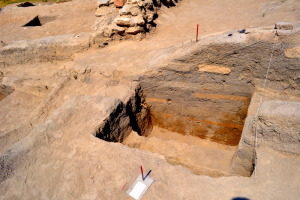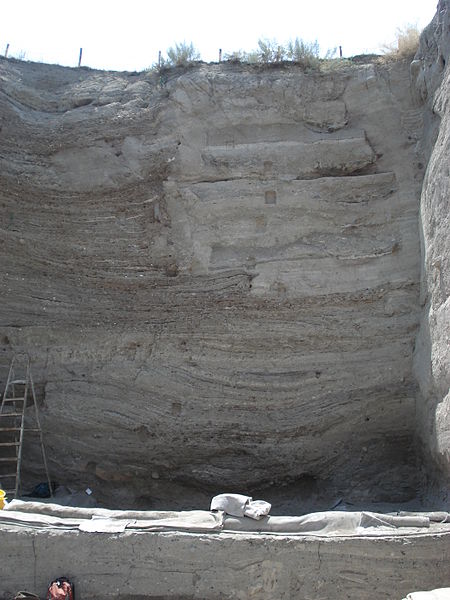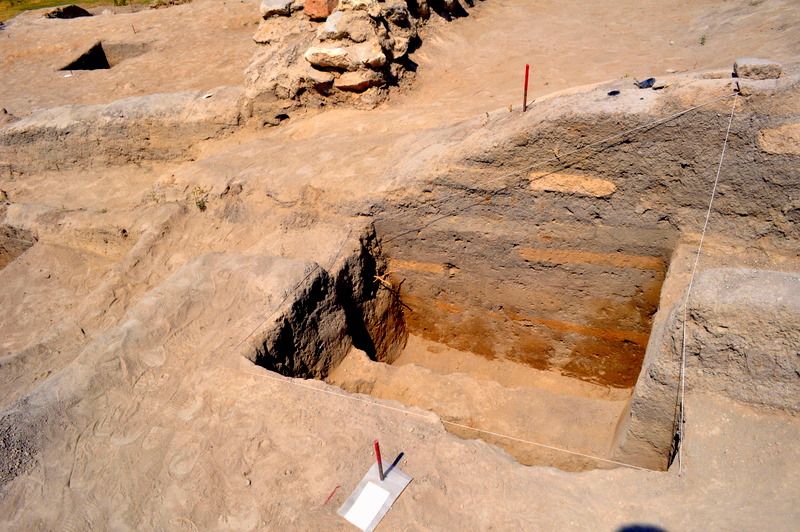
An international team of researchers examining the earliest known pre-ceramic Neolithic mound site in Turkey, called Aşıklı Höyük, suggests that humans shifted from hunting wild ungulates and small animals to managing sheep and goats at the site over a period of a few hundred years beginning on or before 8200 BCE.
The mound, located in south-central Turkey about 25 km southeast of Aksaray, Turkey, has been the subject of a number of studies and excavations in recent years, beginning with Professor Ian A. Todd in 1964. Subsequent investigations included salvage excavations by Professor Ufuk Esin (University of Istanbul) beginning in 1989, followed by those of Nur Balkan-Ath, also of Istanbul University, and more recent excavations in 2010.
Site finds have been stratified into 5 different levels, with the oldest (or earliest) being 5. The most significant findings for these study purposes were discovered in level 4, which contained evidence of human habitation dated to the Pre-Pottery Neolithic Period (a time period generally defined as lasting from 8500-5500 BCE), which is thought by many scholars to mark the transition from a hunter-gatherer way of life to a more settled way of life, including the beginnings of animal domestication.
Above and below: Multiple excavations at Aşıklı Höyük have revealed the telling stratigraphic sequencing of the site. Above credit Kvaestad, Wikimedia Commons, below credit Sarah Murray, Wikimedia Commons.
“This site preserves a surprisingly detailed record of human–animal interactions in a formative settlement,” write study authors Mary C. Stiner, et al., in their recently released report. It is in part reflected in the gradual change in the human diet at the location:
A faunal trend through Levels 4–2 reveals a strategic trade-off in the meat diet, from a broad-spectrum strategy that emphasized diverse wild small animals and ungulates to a concerted exploitation of caprines [sheep and goats] in particular. Caprines constitute less than half of the total number of identified skeletal specimens (NISP) in upper Level 4, but caprines increase gradually to 85– 90% by the end of the time series in upper Level 2. The caprines were mainly sheep, which outnumbered goats by a factor of three or more in all periods.*
In addition, the study authors suggested that age-sex distributions of the caprines in upper Level 4 indicate selective manipulation [breeding] by humans by or before 8200 BCE, and that evidence of animal dung accumulation between structures demonstrates that the animals were held captive inside the settlement at that time.
“Taken together,” the researchers conclude, “the zooarchaeological and geoarchaeological evidence demonstrate an emergent process of caprine management that was highly experimental in nature and oriented to quick returns. Stabling was one of the early mechanisms of caprine population isolation, a precondition to domestication.”*
The study details have been published in the Proceedings of the National Academy of Sciences.
*Article #13-22723: “A forager–herder trade-off, from broad-spectrum hunting to sheep management at Aşıklı Höyük, Turkey,” by Mary C. Stiner et al. http://www.pnas.org/cgi/doi/10.1073/pnas.1322723111
________________________________________
Read about the most fascinating discoveries with a premium subscription to Popular Archaeology Magazine. Find out what Popular Archaeology Magazine is all about. AND MORE:
On the go? Purchase the mobile version of the current issue of Popular Archaeology Magazine here for only $2.99.
Popular Archaeology’s annual Discovery Edition eBook is a selection of the best stories published in Popular Archaeology Magazine in past issues, with an emphasis on some of the most significant, groundbreaking, or fascinating discoveries in the fields of archaeology and paleoanthropology and related fields. At least some of the articles have been updated or revised specifically for the Discovery edition. We can confidently say that there is no other single issue of an archaeology-related magazine, paper print or online, that contains as much major feature article content as this one. The latest issue, volume 2, has just been released. Go to the Discovery edition page for more information.






